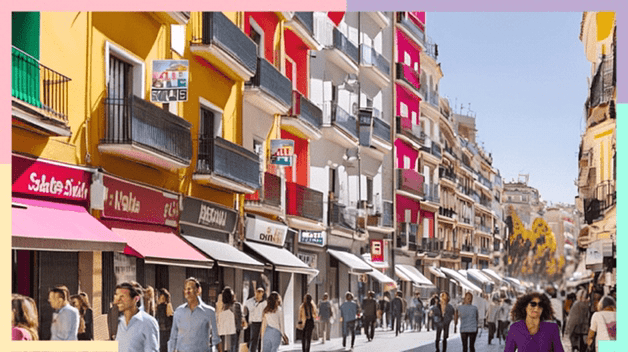Housing prices in southeast Madrid have surged, exceeding €433,000 in some areas. Explore the rising interest in Los Berrocales and Ahijones.
The housing market in the southeastern expanse of Madrid has undergone a remarkable transformation over the past decade, with prices soaring to unprecedented heights. In certain locales, the average cost of residential properties has now eclipsed a staggering 433,000 euros.
In the burgeoning neighborhoods of Los Berrocales and Ahijones, the average property value stands at approximately 330,000 euros. This surge in interest is not merely a local phenomenon; it has even piqued the curiosity of international investors, notably from South Korea.
Madrid is currently experiencing a profound urban metamorphosis, predominantly concentrated in the northern and southern sectors of the capital. The latter is witnessing extensive developments in the southeast, where nearly 120,000 new homes are projected to be constructed, with over half designated as affordable housing. This expansive area, which is at various stages of development, has seen a remarkable acceleration in property prices over the last decade. A report by Foro Consultores Inmobiliarios substantiates this trend, analyzing the evolution of the residential market from 2011 to 2024 across key districts such as Ensanche de Vallecas, El Cañaveral, Ahijones, and Los Berrocales. Notably, the analysis excludes Los Cerros and Valdecarros, as the commercialization of free housing in those areas has only recently commenced.
One of the most striking illustrations of this price escalation is found in Ensanche de Vallecas. In 2011, the average cost of a home was a modest 200,000 euros. However, the economic downturn that followed led to a drastic reduction, with prices plummeting to a low of 142,000 euros. Fast forward to today, and the market has rebounded explosively, with average home prices projected to reach 433,000 euros by 2024—a staggering 200% increase from the nadir.
El Cañaveral, another significant development, has similarly witnessed a remarkable price surge, with an increase of 134% since 2015, escalating from 152,828 euros to 357,727 euros. Meanwhile, the nascent markets of Los Berrocales and Los Ahijones have already begun to show promise, with average prices exceeding 330,000 euros and recent increases of 6.3% and 18.5%, respectively.
The analysis conducted by Foro Consultores Inmobiliarios further reveals that the price per square meter has risen by 10% to 15% over the past year. In Ensanche de Vallecas, the price per square meter has surged from 3,300 euros in 2023 to 3,799 euros in 2024, reflecting a 14% increase. El Cañaveral’s average price hovers around 3,500 euros, while Los Berrocales and Los Ahijones are close behind at approximately 3,400 euros.
However, the supply of new housing has dwindled significantly in recent years. In 2024, only 1,373 homes were marketed—a staggering 51% decrease from the 2,816 homes available in 2011 within Ensanche de Vallecas alone. Additionally, the current inventory of flats for sale has diminished to 586 units, representing a 22% decline from 2023.
This contraction in supply can be attributed, in part, to the exhaustion of projects in Ensanche de Vallecas and El Cañaveral, which have not been swiftly replaced by new developments in Los Berrocales and Ahijones. Although projects under development have increased by 15.3% in the past year, the total number of homes available on the market remains 51% lower than in 2011.
The report also delves into the evolution of the average surface area of these developments. In Ensanche de Vallecas, there has been a discernible upward trend in average surface area from 2011 to 2016, largely due to the focus on smaller housing typologies in projects conceived prior to the 2007 crisis. Conversely, El Cañaveral has seen a general decline in average surface area. As for Los Berrocales and Los Ahijones, it remains premature to draw definitive conclusions regarding their average surfaces, as the market is still in its infancy.
The southeast of Madrid is not merely a case study in real estate; it is a vivid illustration of the complexities and dynamism inherent in urban development, where economic forces, demographic shifts, and international interest converge to reshape the landscape.









